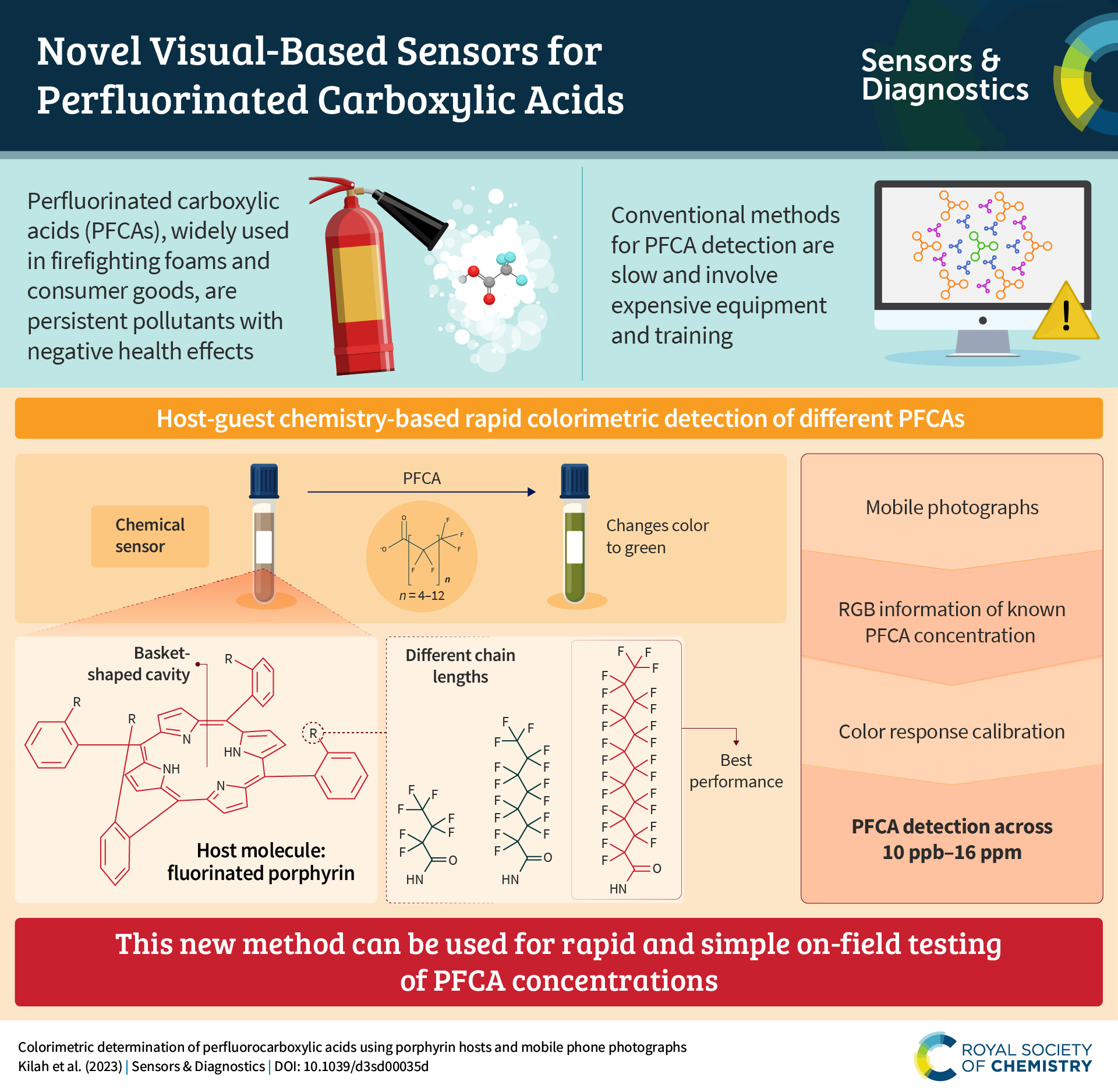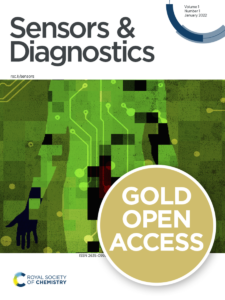About this infographic:
Persistent and harmful pollutants commonly known as “PFAS” are increasingly found in our soil and water. These human-made chemicals are used in non-stick cookware, food packaging, water-resistant fabrics, and firefighting foams and have been shown to persist in the environment and have detrimental effects on human health. While many PFAS have been banned, others are still being manufactured. Detecting these pollutants is the first step toward restoring polluted environments.
The existing methods to detect PFAS are slow and use expensive laboratory equipment. The authors have made chemical sensors that instantly change colour from red to green when shaken with common PFAS pollutants. The technique uses a method called “host-guest” chemistry. A large, coloured molecule, -a porphyrin- forms a “basket” shaped cavity. The authors thought about specific PFAS molecules they investigated to occupy the “basket”, and when they do, the porphyrin changes colour. The naked eye can detect colour response to these PFAS, but using mobile phone photographs allows us to estimate the concentrations to lower levels.

Sensors and Diagnostics, a new open access journal where we highlight emerging research on physical, chemical and bio sensors, as well as sensor devices and systems.
 Sensors and Diagnostics is open for submissions. Find out more on the journal webpage, sign up for email alerts
Sensors and Diagnostics is open for submissions. Find out more on the journal webpage, sign up for email alerts

